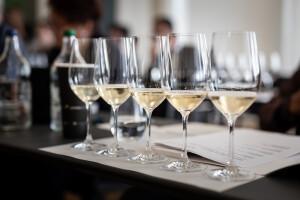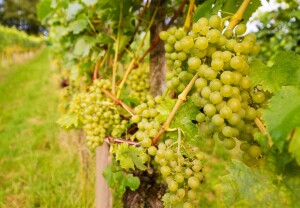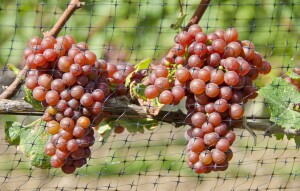Today we have a post written by guest blogger Matilda Parente, MD, CSW. Matilda is a good friend of SWE and has been one of most popular conference presenters in years past. Today, she tells us a story of wine and baseball…what’s not to love?
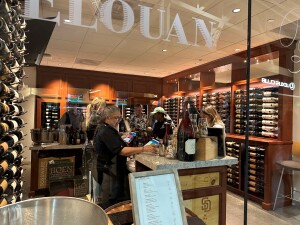
Photo credit: Matilda Parente
The end of the 2023 baseball season promises tight pennant races, riveting playoff series and—fans hope—a thrilling World Series. Wine lovers lucky enough to score game tickets have another reason to cheer, as wine worth a sip is popping up at ballparks across the country.
Wine has been moving in on beer—the traditional preferred ballpark beverage—since at least 1997. Wine service began that year for the San Francisco Giants’ home opener at Candlestick Park. Wine offerings went deep in 2013 when Zipz, a company that introduced a novel single-serve wine glass, partnered with Fetzer to bring a line of premium wine offerings to Major League Baseball crowds, hitting safely in San Francisco, Tampa Bay and Seattle.
In 2020, Woodbridge by Robert Mondavi struck a partnership with MLB to become its official wine, expanding upon its baseball-approved status as the official wine of the Los Angeles Dodgers.
The San Francisco Giants rallied around wine once again in 2022, when it became the first team in all professional sports to bring on a Master Sommelier—the Bay Area’s Evan Goldstein—with the aim to elevate an already robust ballpark wine program. Some of Goldstein’s pairing ideas have included a chilled Beaujolais Villages with a Louisiana Dog, an Argentine Malbec with nachos, and a lower-alcohol Merlot or Cabernet (Sauvignon or Franc) with tri-tip.
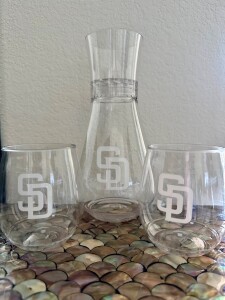
Photo credit: Matilda Parente
At most ballparks now, food and beverage offerings have undergone a much-needed makeover. Fans no longer need to sacrifice game-day palates to rubbery hot dogs on bland bread washed down with a forgettable beer. Along with dozens of craft beer offerings, Petco Park in San Diego, named the 2023 best ballpark in the country by USA Today for the second year in a row, gives vinous-minded fans a line-up of 25 exceptional wines at its Belle Glos Wine Cellar and Belle Glos Wine Cave outposts. Wine pours can be found across the park’s exceptional food outlets, which include an outpost of Taiwan’s Din Tai Fung and San Diego’s own Puesto and Grand Ole BBQ y Asado, the latter two serving mouth-watering birria tacos and Argentine choripan, housemade chorizo and chimichurri on a warm bolillo roll.
The wine service at Petco Park is a far cry from that found at typical sporting venues; fans can choose from premium wines like the home-run offerings usually found at higher end restaurants. Bottles on the Reserve List can range from Cristal, red and white wines by Far Niente to Napa’s Hundred Acre. Best part about the $1,000 price tag? It’s a cashless venue. Fans can also order wine delivered to their seats, whether by 7-ounce pour or by the bottle, served in a souvenir Padres logo plastic carafe with stemless cups. Score early, as wine service at Petco ends with the first pitch of the 8th inning.
The stadium food and beverage revamp is coming in hot across the country. At Yankee Stadium, NYY Steak has become a destination steakhouse, complete with a smart, extensive wine list. Out west, the Seattle Mariners have partnered with Chateau Ste. Michelle for its many wine outlets at T-Mobile Park, which include wine on tap. Down south, the wine bar at the Houston Astros’ Minute Maid Park even serves frosés. But if your taste runs Veuve Clicquot instead, head to the park’s 19th Hole, said to have the largest wine selection in MLB. You know, Texas.
So, get out to the yard before the season ends and indulge in savory and out-of-the-box ballpark eats, served up with a glass or carafe of well-chosen wines worth a sip. Some say they make the crack of the bat sound even sweeter.
Matilda Parente, MD, CSW is a wine educator based in San Diego.




